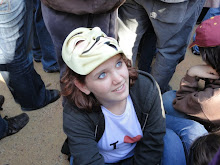My mom has been having these pains lately, and after having a nice picnic at Pops and GangGangs, people have been diagnosing her. They also suggested that I write her symptoms on my blog so everyone can join in the fun!
Symptons
- Nausea
- Dull, throbbing pain in the lower left back (her left)
- Pain feeling like a pulled muscle in the front left pelvic area
- Woke up at 2 am with nausea and pain, initially hot then cold
- No constipation
- No problems urinating
- Diverticulitis
- Kidney stone
- Gall bladder stone
- Ovarian cyst
- Stretching of the ligaments of the uterus
- Pregnancy

10 comments:
tara should go get an ultrasound or something of that sort
could it be a UTI?
http://www.webmd.com/a-to-z-guides/urinary-tract-infections-in-teens-and-adults-topic-overview
From - http://ezinearticles.com/?Persistent-Lower-Back-Pain-–-A-Possible-Sign-of-Gall-Bladder-Disease&id=282343
Biliary colic is a common cause of lower back pain. Biliary colic refers to formation of gallstones inside the gall bladder and hepato-biliary ducts. Gallstones, also known as biliary calculi, are small stones formed from excess cholesterol, calcium and bile pigments. When gallstones accumulate in large amounts they can obstruct bile ducts completely, facilitating the occurrence of gall bladder infections. Associated with gall bladder inflammation and infections, biliary colic generates intense, persistent pain in the region of the lower abdomen and lower back. Gall bladder back pain usually occurs in episodes, each attack lasting from 20-30 minutes to a few hours.
The formation and accumulation of gallstones at the level of the biliary system is a common disorder, affecting more than 15 percent of people with ages over 50. Gallstones can be easily observed with the means of ultrasound tests and computerized tomography and patients can be quickly diagnosed with biliary colic. If you experience intense abdominal and back pain, associated with abdominal bloating, nausea and vomiting, it is best to see a doctor as soon as possible, in order to receive an appropriate medical treatment.
^Wouldn't that cause urinay issues?
I admit biliary colic is not a perfect fit.
I went to the doctor today (though not my usual doctor because he had no openings). She said "Since the emergency room couldn't figure it out, how do you expect me to know what it is?!?". But somehow she concluded it was just muscle spasms and I should just get over it. She gave me a prescription for a muscle relaxant that I am to take at bedtime.
Give that DR the "N E X T!" Did she do any tests? How frustrating...I think you should talk to your OB/GYN about possible cysts. You do go to the OB/GYN right?! Or, maybe you will start =)
I suggest a holistic approach by getting diagnosed by an acupuncturist. They will take twelve pulses and tell where you are imbalanced from that. I think Chrissy knows one in Waldorf that she likes.
The most common symptom of gallstones is biliary colic. Biliary colic is a very specific type of pain, occurring as the primary or only symptom in 80% of people with gallstones who develop symptoms. Biliary colic occurs when the extrahepatic ducts-cystic, hepatic or common bile-are suddenly blocked by a gallstone. (Slowly-progressing obstruction, as from a tumor, does not cause biliary colic.) Behind the obstruction, fluid accumulates and distends the ducts and gallbladder. In the case of hepatic or common bile duct obstruction, this is due to continued secretion of bile by the liver. In the case of cystic duct obstruction, the wall of the gallbladder secretes fluid into the gallbladder. It is the distention of the ducts or gallbladder that causes biliary colic.
Characteristically, biliary colic comes on suddenly or builds rapidly to a peak over a few minutes.
It is a constant pain, it does not come and go, though it may vary in intensity while it is present.
It lasts for 15 minutes to 4-5 hours. If the pain lasts more than 4-5 hours, it means that a complication - usually cholecystitis - has developed.
The pain usually is severe, but movement does not make the pain worse. In fact, patients experiencing biliary colic often walk about or writhe (twist the body in different positions) in bed trying to find a comfortable position.
Biliary colic often is accompanied by nausea.
Most commonly, biliary colic is felt in the middle of the upper abdomen just below the sternum.
The second most common location for pain is the right upper abdomen just below the margin of the ribs.
Occasionally, the pain also may be felt in the back at the lower tip of the scapula on the right side.
On rare occasions, the pain may be felt beneath the sternum and be mistaken for angina or a heart attack.
An episode of biliary colic subsides gradually once the gallstone shifts within the duct so that it is no longer obstructing.
Biliary colic is a recurring symptom. Once the first episode occurs, there are likely to be other episodes. Also, there is a pattern of recurrence for each individual, that is, for some individuals the episodes tend to remain frequent while for others they tend to remain infrequent. The majority of people who develop biliary colic do not go on to develop cholecystitis or other complications.
Ah, I am not the only one who thinks biliary colic.
Post a Comment